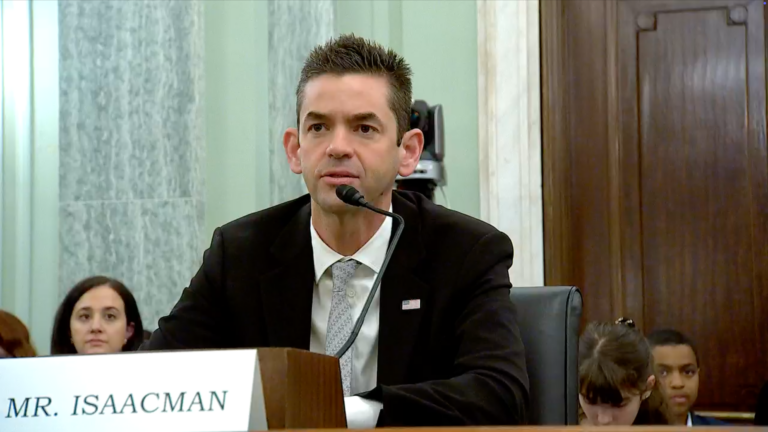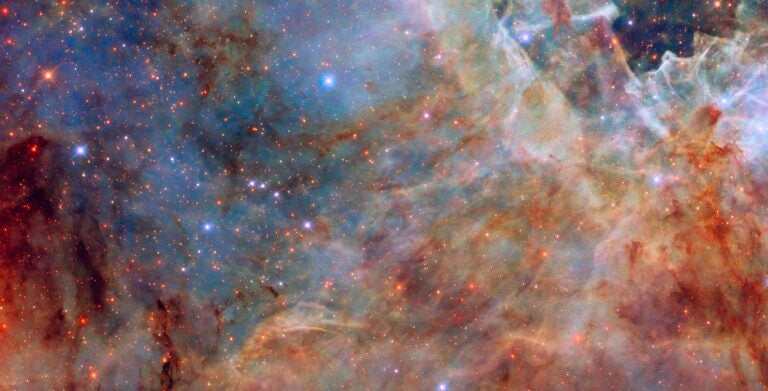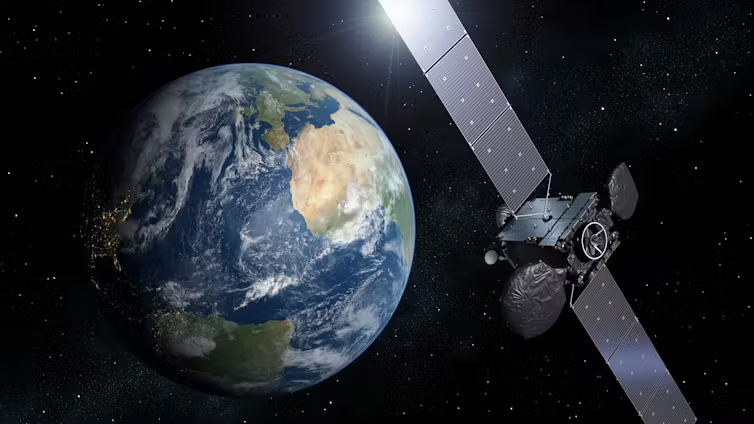Backyard astronomers see none of it. Even if you sell your kids as lab experiments to buy a 40-inch Dob, all galaxies appear visually gray, as do nearly all diffuse nebulae.
So how to jazz it up? Say you want to impress that girl next door who reportedly loves geeks, and she’s huskily asked you to show her the Lagoon Nebula (M8). (Note: This has never actually happened.) Well, you’re reluctant to offer the gray blurry eyepiece view, especially when you can tweak, manipulate, contrast-boost, saturate, or accentuate any captured image on your monitor and digitally take her down a Matrix-like rabbit hole. It’s Disneyland meets Sagittarius. But is it ethical?
Astrophysicists routinely use false color as a tool. Then along came Jeff Hester and Paul Scowen of Arizona State University. They used the Hubble Space Telescope in 1995 to look at the Eagle Nebula (M16). Hubble cannot take color pictures, so the astronomers used filters to capture three separate gray images in the light of glowing hydrogen, oxygen, and sulfur. Assigning color to each and combining them revealed where “winds” from newborn stars sculpted patterns in the dusty gas. The result was the most famous astrophoto of all time, dubbed the “Pillars of Creation.” It is gorgeous and scientifically useful.
But then things got freaky. First, the pair seemed to claim that the colors were real. Many believed them. In fact, one astronomy publication (it wasn’t us) ran the image with a caption saying “true color.” Wow, were there actually such odd yellows, oranges, and aquamarines out there?
Of course not. But it took me a half-hour of grilling Hester in 1996 before I got him to admit it. You see, hydrogen’s actual glow is visually red. Oxygen looks green. As for ionized sulfur, there’s so little of it that whatever minuscule red light it might emit gets swamped by everything else.
are always the same
repetitious shade
of red, as if God
bought the paint at
a close-out sale.
No visiting future astronaut would ever see anything resembling that photo, even if she drove her off-road vehicle right up to it. Actually, it would look gray in person. The eye can’t see color at low light levels, especially crimsons and blues at the fringes of the visible spectrum. But if we could somehow boost the Eagle to fire our retina’s cone cells, we’d perceive the whole thing as a uniform red — just the way photographers normally depict it.
The “Pillars of Creation” image is as real as AstroTurf. Yet everything was totally fine except for that “true color” captioning. That’s what made it bogus.
So, what to do? If you show the Eagle or the Lagoon to your neighbor through your eyepiece, she’ll likely be as excited as if you were pointing out pond scum. It’s visually a drab blur, if it even shows up at all. Of course, you want to boost it. But you also want to be scientifically honest. After all, she just got her master’s in physics, in this particular fantasy.
There are a couple of good choices. The first is to capture a telescope image of a deep-sky object on your CCD camera, maybe using a Hydrogen-alpha filter if you live in Pasadena or Manhattan, and turn up the contrast and saturation on your monitor. If it looks gray, you could paint it red and still be legit. Think of those stunning shots of Andromeda (M31), with cobalt-blue spiral arms and a campfire-yellow nucleus. They’re not quite real because the actual hues are pastels. Yet, by today’s consensus, as long as you haven’t changed the blue to fuchsia or something, it’s still considered true color. And who knows, maybe orangutans or the Aurithians from the fashionable but pricey Aldebaran system perceive color with more saturation than we do.
The alternative is to shoot vivid objects that don’t need boosting. Choose from dramatic targets like the Moon, Saturn, or Jupiter. Or globular clusters, unless you’ve been sucker-punched into owning a teensy 40mm refractor. Magnificent galaxies like the Needle (NGC 4565) come out splendidly in black and white. And a few nebulae show legitimate multiple colors when photographed, like the Orion (M42) and the Trifid (M20).
“This is how it really looks!” you say to that girl next door, making eye contact and telling the truth.
“I love when you talk like that,” she answers.
And suddenly, you know you’ll never use false color again.
Contact me about my strange universe by visiting http://skymanbob.com.










